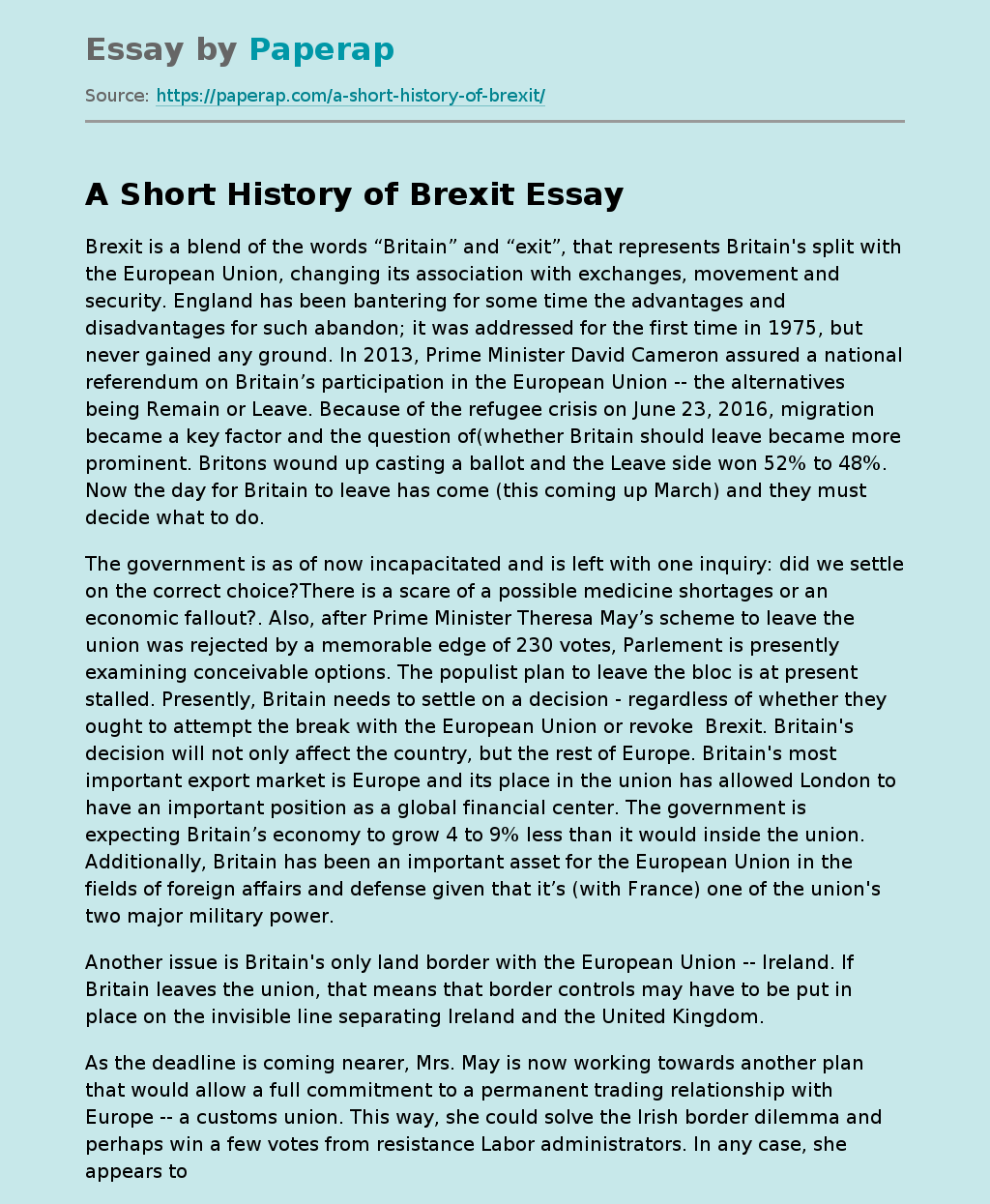A Short History of Brexit
Brexit is a blend of the words “Britain” and “exit”, that represents Britain’s split with the European Union, changing its association with exchanges, movement and security. England has been bantering for some time the advantages and disadvantages for such abandon; it was addressed for the first time in 1975, but never gained any ground. In 2013, Prime Minister David Cameron assured a national referendum on Britain’s participation in the European Union — the alternatives being Remain or Leave. Because of the refugee crisis on June 23, 2016, migration became a key factor and the question of(whether Britain should leave became more prominent.
Britons wound up casting a ballot and the Leave side won 52% to 48%. Now the day for Britain to leave has come (this coming up March) and they must decide what to do.
The government is as of now incapacitated and is left with one inquiry: did we settle on the correct choice?There is a scare of a possible medicine shortages or an economic fallout?.
Also, after Prime Minister Theresa May’s scheme to leave the union was rejected by a memorable edge of 230 votes, Parlement is presently examining conceivable options. The populist plan to leave the bloc is at present stalled. Presently, Britain needs to settle on a decision – regardless of whether they ought to attempt the break with the European Union or revoke Brexit. Britain’s decision will not only affect the country, but the rest of Europe. Britain’s most important export market is Europe and its place in the union has allowed London to have an important position as a global financial center.
The government is expecting Britain’s economy to grow 4 to 9% less than it would inside the union. Additionally, Britain has been an important asset for the European Union in the fields of foreign affairs and defense given that it’s (with France) one of the union’s two major military power.
Another issue is Britain’s only land border with the European Union — Ireland. If Britain leaves the union, that means that border controls may have to be put in place on the invisible line separating Ireland and the United Kingdom.
As the deadline is coming nearer, Mrs. May is now working towards another plan that would allow a full commitment to a permanent trading relationship with Europe — a customs union. This way, she could solve the Irish border dilemma and perhaps win a few votes from resistance Labor administrators. In any case, she appears to be ready to do the inverse, and rather attempt to prevail upon right-wingers in her very own gathering by agreeing to their interest for measures that would hazard outrage in Brussels and a hard border in Ireland. In the meantime, Jeremy Corbyn, the Labor leader, who has buckled down not to submit his gathering to an unmistakable seminar on Brexit, is choosing whether to get behind a second open vote or to look for a more “flexible” Brexit bargain that would keep up more ties with the Continent. Now, it’s just a matter of waiting.
A Short History of Brexit. (2021, Dec 05). Retrieved from https://paperap.com/a-short-history-of-brexit/

